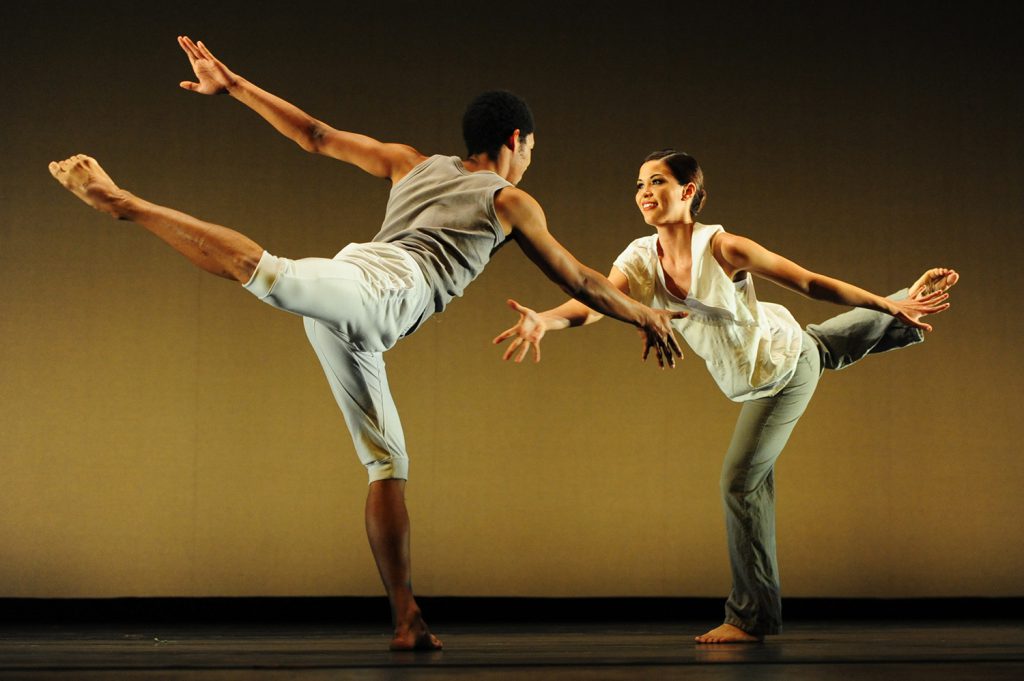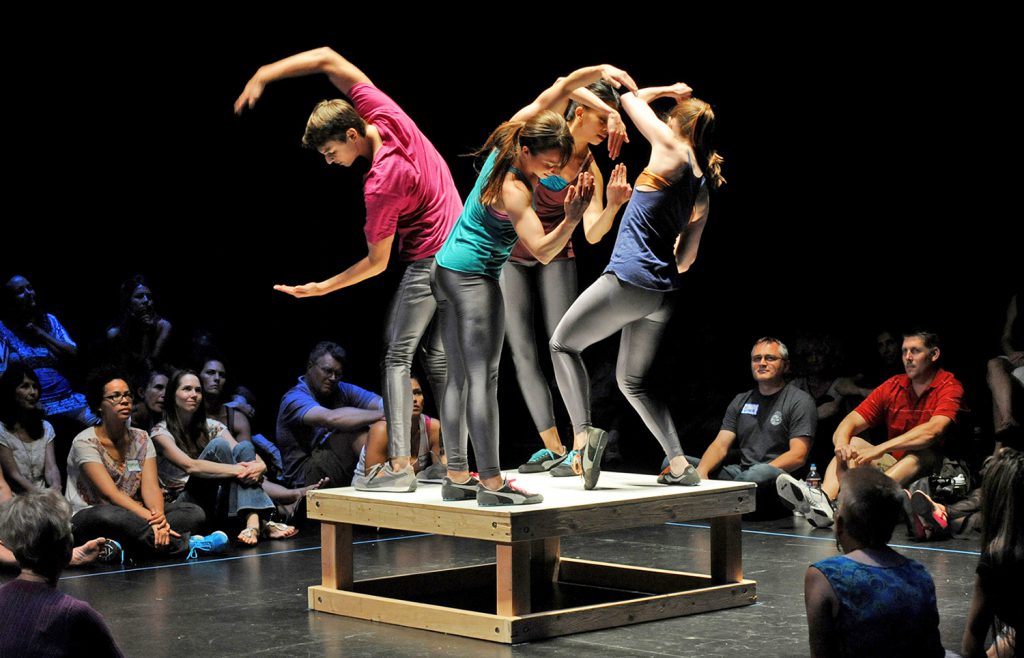
By Allie Davis | Special to the NB Indy
Four months ago, Orange County-based Backhausdance Company performances came to a screeching stop. Like other dance troupes around the country, the global pandemic caused dance concerts, classes, and the ability to move together to vanish in an instant.
When the world went virtual, Backhausdance founder Jennifer Backhaus of Newport Beach was faced with one major challenge: how to adapt the art of movement and dance to survive in a world online.
If anyone was equipped to tackle the challenge, it was Backhaus, whose outlook can best be captured in a statement she shared: “Problem solving is exciting. It’s creative.”
If anything, it was like choreography—thinking outside the box and working together to create something beautiful, unifying, and powerful.
A choreographer and full-time Chapman Dance faculty member, Backhaus launched her dance troupe in 2003 when she realized the only dance companies around were strictly classical ballet and jazz.

“There is a freedom in modern dance because there’s not a codified canon of movement,” shared Jennifer. “It allowed me to take all the things I love about choreography and dance and moving and put them all together.”
Backhausdance went on to become an award-winning contemporary dance company, premiering works at a multitude of prestigious theatres like John Anson Ford Theater (Hollywood, CA), Joyce Soho (New York, NY), Segerstrom Center for the Arts (Costa Mesa, CA), The Carpenter Center (Long Beach, CA), Irvine Barclay Theatre, and many more.
The company has also remained dedicated to education through partnerships with The Segerstrom Center for the Arts & McCallum Theater. Summer intensives, residencies, and masterclasses that reach students from ages 10 and up.
When the quarantine mandates were first announced in March, the company was just beginning their spring season and in the middle of a residency with a renowned choreographer from Israel.
“We were two weeks into the program when quarantine hit,” explained Backhaus. “We did a quick showing of the work in progress and then we had to shut our doors.”
That meant Backhausdance had to cancel all performances for the rest of the season, alongside multiple education programs.

“It was difficult financially because we were doing a lot of prep in the fall and all of our performances were in the spring. So, all income went out the door,” she said.
Despite the hard hit the company took, the community of dancers and choreographers did not hesitate when it came to finding innovative ways to reach the community.
“Right when quarantine hit, we had one day and we ran into the studio to begin filming,” explained Jennifer. “We created something called ‘Move With Us.’”
Move With Us became a free virtual series open to anybody and includes courses in technique, wellness, and exploration. By going to https://bd-online.thinkific.com you can find courses in yoga, Pilates, conditioning, ballet barre, technique, and even guided improvisational prompts for dancers looking to expand their artistry. New content is uploaded weekly taught by Backhaus and company dancers, and is fit for a variety of dance-experience levels.
Backhausdance is still offering their renowned summer intensive, but it’s gone virtual. The five-day summer intensive programs will be held between July 13 and 31, and offer programs for emerging dancers (ages 10-12), teens (ages 13-16), advanced (17+), educators and teaching professionals, and incoming Chapman University dance majors.
For the virtual classes, Backhaus has created a hands-on, personalized and immersive experience. While it may not be the typical summer dance experience, the Backhaus said her dance team is working hard to create a virtual program that will capture the same essence and values of the in-person courses, as laid out on their website at http://www.backhausdance.org/virtualintensive.
The intensive program is centered around small class sizes and personal mentorship, high caliber training with Jennifer Backhaus and company members, and esteemed choreographers from all around the world. There are virtual extracurricular events to make new friends, and a performance opportunity at the end of the five-day program via a virtual watch party.
“The program will be a lot more immersive and curated” than normal, explained Backhaus. They even brought in a physical therapist and Long Beach State Dance Science Professor, Dr. Brooke Winder, to ensure their program is designed with the student’s limited space and safe practices in mind, and that students have the information they need to sustain their health and wellness while training at home.
What’s the most difficult part for students adapting to dancing at home with limited space?
“We’re addicted to the physical output, so keeping the dancers motivated was the biggest struggle. And the disconnection. They really struggled with that,” said Backhaus, who added that the biggest factor in keeping them motivated was helping the students be honest with where they are and understand that they can’t do the exact same things they used to do.
Backhaus also encourages her dancers to go outside or dance somewhere they don’t normally dance. She stressed the importance of incorporating a lot of creative problem solving, improvisational prompts, and focusing on quality over quantity in their technique training.
While adapting educational programs to the online world, Backhaus has also been brainstorming how to move forward with the company’s season for next year. Right now, they are looking at a lot of dance on film ideas. Their season normally runs from September to May, so they are creating a virtual season and considering a hybrid of live/virtual performances if possible. The troupe is looking at revisiting their repertory pieces and how they might adapt them to the screen by collaborating with videographers.
“I don’t think anyone is going to go back to being 100 percent live after all this is over,” said Jennifer. “They are going to look at what they can do to engage people who can’t be with us in person.”
In discussing how the pandemic may change the landscape of dance, Backhaus believes it will turn into a lot more dance on film.
“I think it’s good—I think more people will be attracted to dance,” she said. “More will see it as a real art form: dance as a communicator of ideas rather than just dancing behind Lady Gaga. We need it all.”
Asked why the world needs dance right now, Backhaus had a ready answer.
“Dance has the power to connect us emotionally, physically, kinesthetically. It has the power to bring joy. It has the power to ask questions and to challenge. People moving together is powerful. Period. You can look at it in terms of social activism: people walking together. It doesn’t have to be the brava of a pirouette; it can be as simple as many people lifting their arms up together. That fact that that can happen even when we’re not in the same space is pretty profound.”
For more information, visit http://www.backhausdance.org.





